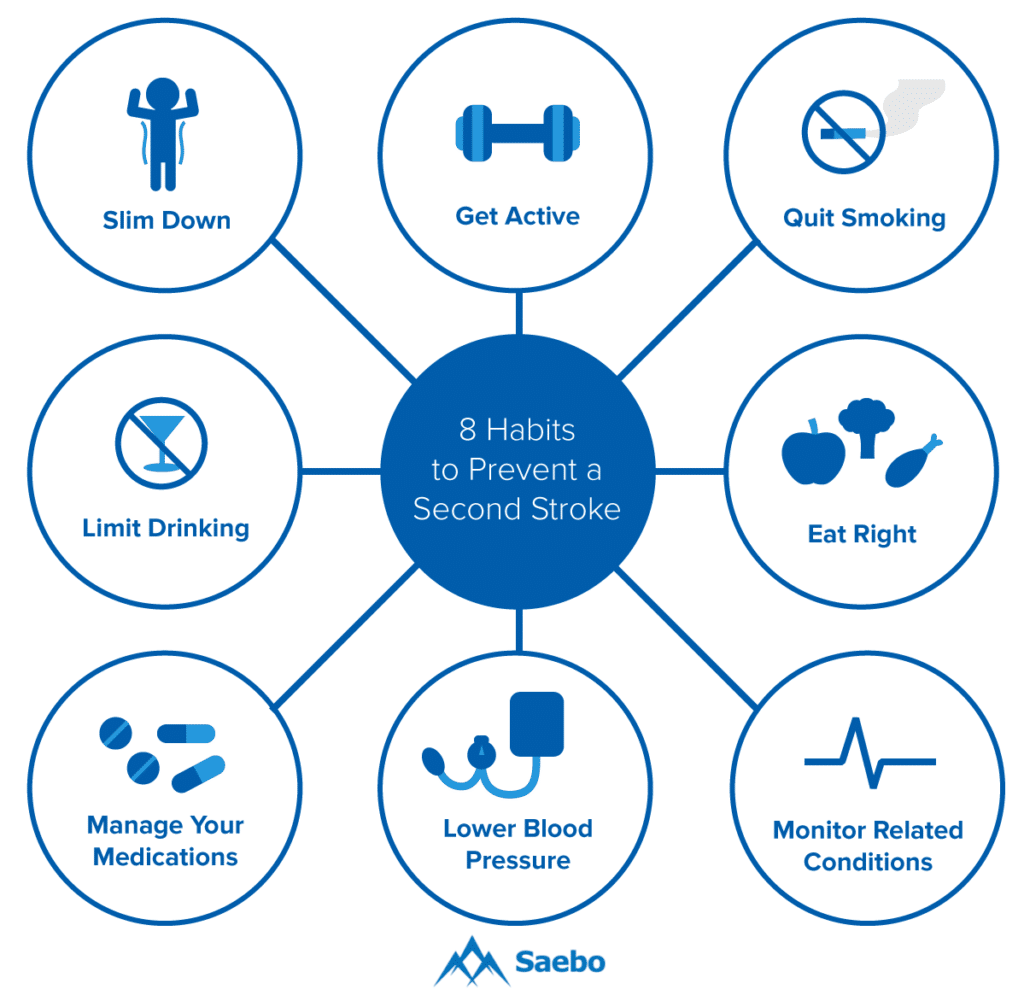Henry Hoffman
Friday, February 10th, 2017
Last modified on June 15th, 2022
Caregiver AdviceMobilityNeuroplasticitystrengtheningTherapist Advice

Strokes can come with little to no warning, but quite frequently, they reveal issues that had been building up for some time. And when those problems clearly present themselves, patients and caregivers can move ahead armed with the latest research and medical advice for preventing a relapse.
Now that researchers are understanding the high rates of a second stroke—nearly one in 12 people—they are focusing their attention on lifestyle changes and steady habits that set the body on a healthier track. Unfortunately, the chance of further complications and even death are far more likely after a stroke. Therefore, mapping out a steady path toward new habits is crucial to maintaining a healthy future.

Learning and setting a new, ongoing habit is a studied skill. James Clear outlines a simple and straightforward approach to building strong habits through his “3 R’s” program. Reminder, routine, and reward are the three actions surrounding each of our daily decisions. A recurring signal tells us to act, we complete the action, and then we receive something in return as a “reward.” And so, with proper repetition, actions slowly become second nature. Breaking down the habit-setting process can help us take control of the patterns we wish to reinforce.
Habits not only benefit our health and well-being, but can also affect the way we go about our day. The more an action is hardwired into our brains and muscles, the less energy is required to make the decision. In other words, building habits allows our minds to refocus on what truly matters during the day.
After a stroke, lifestyle changes may seem even more daunting, especially when working around new physical demands. But starting with slow and simple actions will combat the chances of a second stroke or further complications.
Over a quarter of stroke survivors will see another stroke in their lifetime, and the five years following the first stroke are a crucial time to build these new lifestyle habits. The parts of the brain that were originally damaged are not as resilient in their weaker state, making them less resistant to further issues. Men have a slightly higher chance of it happening again—nearly 42 percent—but it is just as pertinent for women to reevaluate their daily patterns.
Positively adjusting your health always begins by focusing on what is within your control. Here are eight actions to consider when building healthier habits:

The importance of healthy habit building cannot be restated enough. Post-stroke recovery can feel daunting, especially when the threat of a second stroke is statistically high. But small lifestyle changes are the path to stable health, and consistency is the best way to lower the chances of recurring problems in the future.
All content provided on this blog is for informational purposes only and is not intended to be a substitute for professional medical advice, diagnosis, or treatment. Always seek the advice of your physician or other qualified health provider with any questions you may have regarding a medical condition. If you think you may have a medical emergency, call your doctor or 911 immediately. Reliance on any information provided by the Saebo website is solely at your own risk.